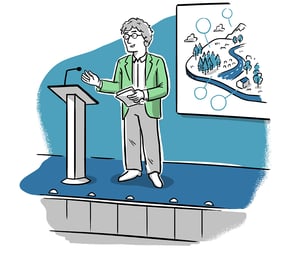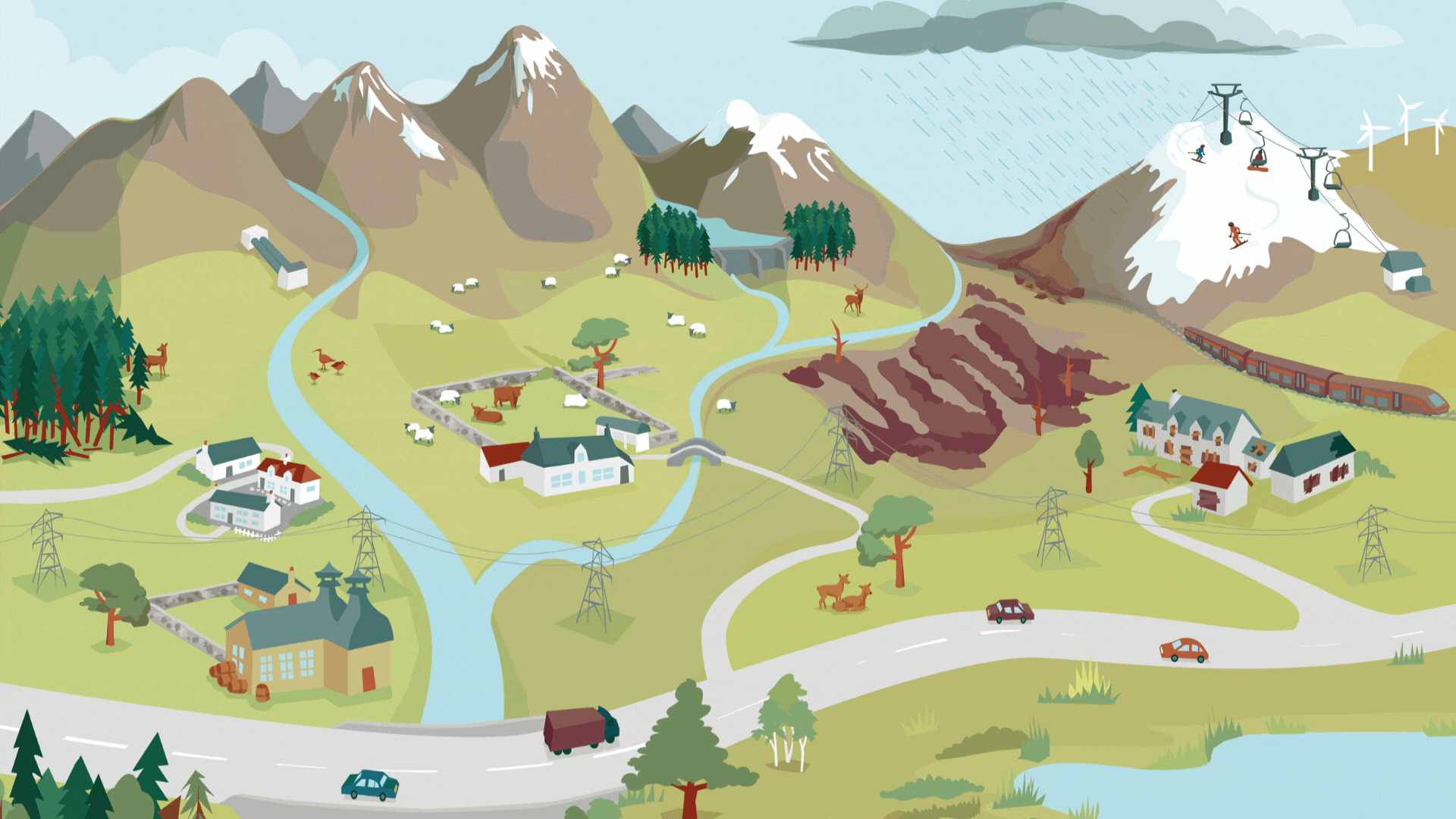Bonkers but good!: The role of pictures in research
It's more than a decade since Marc Metzger, Professor of Environment and Society at the University of Edinburgh, first collaborated with us at Scriberia. Since then, visuals have become integral to his research methods, and now he's sharing what he's learned.
Whether engaging with hill farmers in the highlands or lecturing to a diverse audience, Marc Metzger, Professor of Environment and Society at The University of Edinburgh, recognises the power of using visuals to enrich and expand the horizon of research.
Back in 2013, Marc approached Scriberia to create an interactive vision map to help him communicate how Scotland could prepare for, and become more resilient to the impacts of climate change. More than a decade later - to our pride - the vision map is still doing that important job (here). And its legacy also lives on in the belief that visuals have an important role to play when it comes to the communication of research - which that has shaped our work and Marc's ever since!
His latest research article - "Bonkers but good! - Using Illustration-based interview methods to understand land management and conservant visions" - was published in ScienceDirect, a leading peer-reviewed source for scientific research. In it, Marc and his team explore the transformative use of illustrations to enhance the interview process in research projects.

The study is centred on STREAMLINE, a novel face-to-face interview format, that combines traditional survey techniques with illustrated scenarios, to more effectively engage participants with questions on their views on future land use in Europe.
“What we found from the study is that the playful nature of using visuals in these interviews breaks the ice, creating a lighter, less formal atmosphere that makes participants feel at ease and results in deep engagement,” says Marc. “The richness of thoughts and insights that came out of it was far greater than anything a conventional survey could capture.”
“The richness of thoughts and insights that came out of it was far greater than anything a conventional survey could capture.”
The study highlights the profound impact of a visual approach in fostering inclusivity and engaging a broader cross-section of society. The findings underscore how visuals spark curiosity, make complex topics accessible, and resonate particularly well with less powerful and harder-to-reach societal groups - crucial for this type of research.
“If you’re a professor or academic talking to, say, a hill farmer up in the highlands, it can be a challenging, intimidating situation. Using visuals encourages personal conversations that ease rapport,” says Marc.
“A visual approach demonstrates respect for our participants; it signifies our commitment to conducting activities in a manner that is sensitive to their interests and needs."
“Having worked with Scriberia for over a decade, I fully appreciate the power of something visual over text. I think that stays with your audience a lot longer than a bombardment of facts and figures.”
The inclusion of visuals proves to be a remedy for ‘research fatigue’, alleviating burnout from both participants’ and researchers’ perspectives.
“Feedback from participants was overwhelmingly positive, with one describing the format as ‘bonkers but good!’ But the big surprise from this project was just how much the researchers liked it too,” says Marc.
Over the past decade, Marc and his team have worked with Scriberia on a variety of projects, using visuals to support and enhance communication. Marc also uses this approach within his teaching, to liven up lectures and Powerpoint slides as well as in academic papers to enrich the research.
Marc adds, “Having worked with Scriberia for over a decade, I fully appreciate the power of something visual over text. I think that stays with your audience a lot longer than a bombardment of facts and figures.
“I'll continue using visual approaches in all my work, especially for communicating complex concepts to a non-specialist audience.
